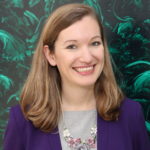“Normally I’m against big things. I think the world is going to be saved by millions of small things” — Pete Seeger
There are a million decisions that go into the process of building a company. By surfacing perspectives from 75 companies in our portfolio network, we hope to create tools that help people within each company answer even a fraction of these. Added up across this 10,000-person community, if everyone is enabled to make one better call, then this might lead to 10,000 better decisions than before.
When starting a business, the founding team must decide early on what to create, who it’s for, and how to build it. Following that, a new set of decisions emerges, including choices like how to launch, who to hire, and how much money to raise. And so, the process repeats itself.
Albert Wenger, one of our partners at USV, likes to refer to this “leveling up” process like beating a new level in a video game. With each new level or phase of growth in a startup, you’ll need to use the skills you’ve already mastered plus an added new challenge. By the time you’re a 100-person, Series C company, the number of questions asked (and the sheer number of people deciding things) may have increased by a factor of 10.
Admittedly, the role of an executive team also becomes infinitely more complex along the way.
It’s likely that there are people on the executive team who are going through the process of company-building for the first time, and making decisions might seem scary. Part of why it can be helpful to have a board of entrepreneurs, VCs, and advisors is because these people can offer insights, observations, and pattern recognition that you may never be able to see from your vantage point. And certainly, by taking board seats on many of the deals we see at USV, we strive to stick close to our entrepreneurs throughout each step of this process to do just that.
But there are many great people at startups who will never have the privilege to be a part of board meetings or interact with investment partners at any VC firm. Those people still make decisions, too. Maybe not the kind that are discussed the board level, but still decisions nonetheless. These might include things like:
- How should we design behavioral interview questions for our candidate process?
- Should we migrate our system architecture to microservices?
- What PR firm should we work with to announce our Series C?
- Should the engineers sit next to the sales team, or on a different floor?
- Would a rebrand make it easier for us to launch internationally?
- Would this strategic partnership help us meet our OKRs this quarter?
No matter where you sit inside of an organization, you likely have some decision-making power.
Maybe you manage the office pantry and decide what type of food and snacks will give your colleagues the most energy to go about their days. Maybe you run IT and help prevent cyber-attacks or data breaches by educating your colleagues about safety best practices. Maybe you run your events marketing strategy and research the best conferences where you might set up a booth on the trade show floor to generate the highest quality leads for the sales team.
The single weight of any one decision may be quite small, (See: “Should we have both breakfast and lunch snacks in our fridge?”) but the outcome of each choice matters. Over time, each “good call” contributes to an additive effect of a stronger, better company. And this is how we’ve designed the peer-to-peer effects of learning across the USV portfolio network. We want to empower everyone to make the best decisions possible by surfacing as many different perspectives as we can.
Rather than expect 1 person at the top to make the “right” call 100 times in a row, we’ve designed the USV Network around a second possibility: Can we help 100 people each make one slightly better decision than before?
In aggregate, by encouraging cross-pollination of ideas and experiences through all of the talented people across our portfolio, we believe we can leverage our network to serve as a resource to help all employees learn and grow.
In other words, when looking across our entire startup portfolio, we might ask: Can we help 10,000 people across 75 different companies to each make one better decision?
Each year, there are more than 150 touchpoints for people across this network to come together and share “lessons learned” at various in-person and remote events. Outside experts join us from time to time to time, bringing outside perspectives about management, leadership, or other common questions that arise. And dozens of people have stepped up to lead their own programming or even share back advice in one-on-one interactions with peers. In the end, we hope that by regularly convening people with similar functional roles across different companies, we might introduce new possibilities, solutions, and ideas — one person at a time.
So, can the USV Network help make 10,000 better decisions? It’ll be impossible to know for sure. But we’re certainly going to try.

